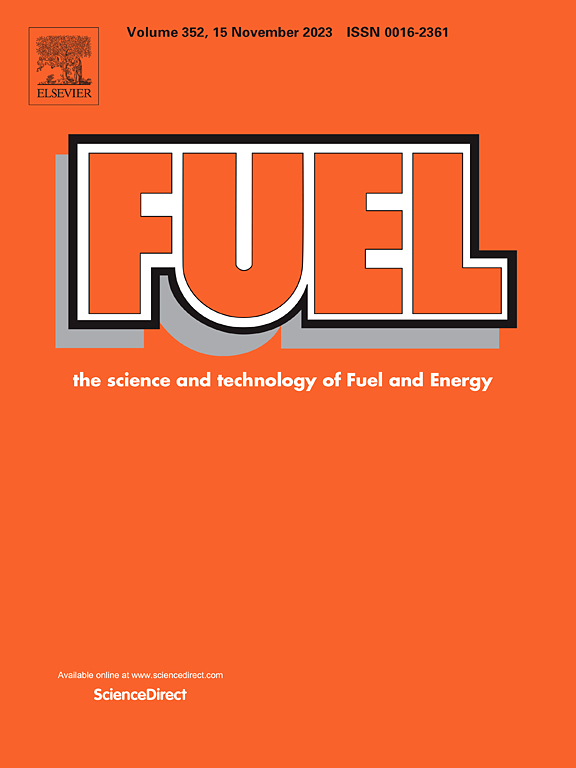新型含锌HZSM-5型乙烯芳构化催化剂的研究
IF 7.5
1区 工程技术
Q2 ENERGY & FUELS
引用次数: 0
摘要
锌改性HZSM-5催化剂主要用于煤基甲醇转化为芳烃的关键环节——轻烯烃芳构化反应。然而,催化剂面临着Zn物种迁移、转化和随后的损失,最终导致不可逆失活的挑战。为了解决这一问题,我们开发了一种稳定的催化剂ZnAl1.5O/HZSM-5,它将尖晶石结构的ZnAl2O4和ZnO混合在HZSM-5沸石中。结果表明,ZnO含量为0.69 wt.%的ZnAl1.5O/HZSM-5催化剂具有优异的催化性能,与其他锌基催化剂相比,其芳构化选择性高达67.8%,稳定性为174.5 h,锌损失率为0.15 wt.%/h。尽管在纯尖晶石样品(ZnAl2O4-pure)中缺乏芳化催化活性,但它有效地帮助改善ZnO的分散和促进可逆迁移,从而促进乙烯芳化(ETA),提高催化稳定性。此外,还讨论了Zn在ZnAl1.5O/HZSM-5催化剂上的迁移和捕获机理。本文章由计算机程序翻译,如有差异,请以英文原文为准。
Study on a novel Zn-containing HZSM-5 catalyst for ethylene aromatization
The Zn-modified HZSM-5 catalyst has been predominantly utilized in the aromatization reaction of light olefins, a crucial step in the conversion of coal-based methanol to aromatics (MTA). Nonetheless, the catalyst encounters a challenge wherein Zn species undergo migration, transformation, and subsequent loss, ultimately resulting in irreversible deactivation. To address this concern, we have developed a stable catalyst, ZnAl1.5O/HZSM-5, which incorporates both spinel-structured ZnAl2O4 and ZnO species in HZSM-5 zeolite. The results demonstrate that the ZnAl1.5O/HZSM-5 catalyst, with ZnO content of 0.69 wt.%, exhibits exceptional catalytic performance characterized by a significantly higher aromatization selectivity of 67.8 %, remarkable stability spanning 174.5 h, and a substantially lower Zn loss rate of 0.15 wt.%/h, when compared to other Zn-based catalysts. Despite the absence of aromatization catalytic activity in the pure spinel sample (ZnAl2O4-pure), it effectively aids in improving the dispersion of ZnO and facilitates reversible migration, which promotes ethylene aromatization (ETA) and enhances catalytic stability. Furthermore, the migration and capture mechanisms of Zn on the ZnAl1.5O/HZSM-5 catalyst are also discussed.
求助全文
通过发布文献求助,成功后即可免费获取论文全文。
去求助
来源期刊

Fuel
工程技术-工程:化工
CiteScore
12.80
自引率
20.30%
发文量
3506
审稿时长
64 days
期刊介绍:
The exploration of energy sources remains a critical matter of study. For the past nine decades, fuel has consistently held the forefront in primary research efforts within the field of energy science. This area of investigation encompasses a wide range of subjects, with a particular emphasis on emerging concerns like environmental factors and pollution.
 求助内容:
求助内容: 应助结果提醒方式:
应助结果提醒方式:


